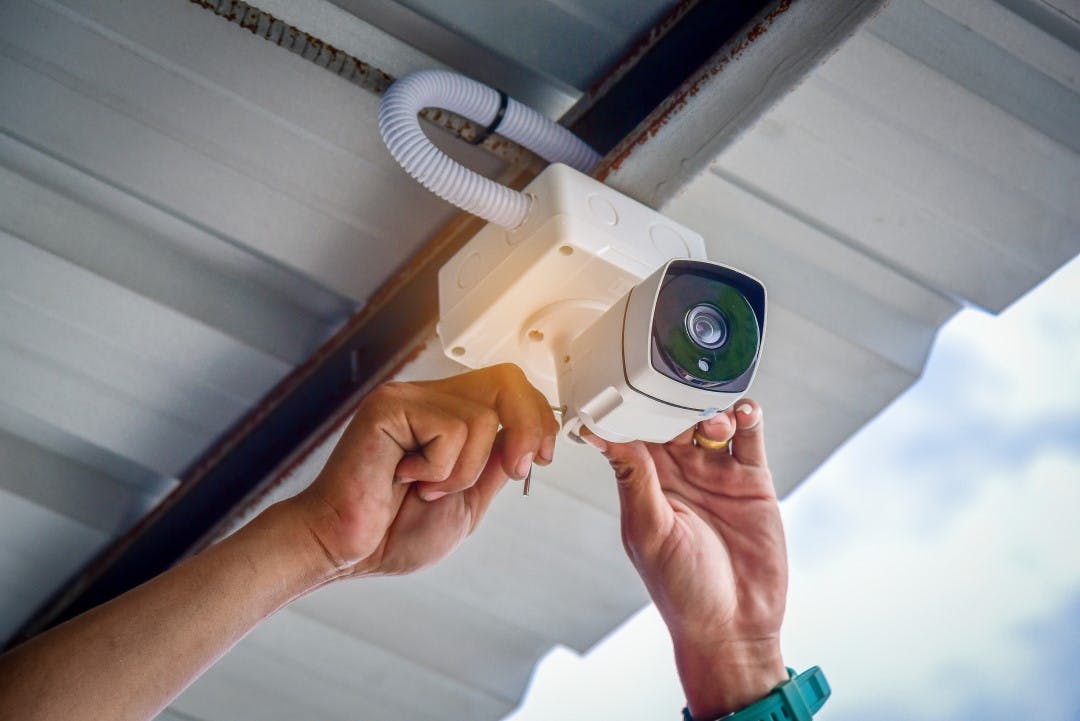Introduction
Installing a smart home security system is an important step towards protecting your home and loved ones.
These systems offer advanced features such as sensors, cameras, and monitoring capabilities to keep your home safe and secure.
However, one important consideration when installing a smart home security system is whether to do it yourself or hire a professional installer.
DIY installation involves setting up the system yourself, while professional installation involves hiring a licensed technician to install the system for you.
Both options have their own pros and cons, and it’s important to consider each option carefully to determine which one is the best fit for your needs.
Understanding Installation
When it comes to installing a smart home security system, there are two main options: DIY installation and professional installation.
DIY installation involves handling smart home security device installation & setup yourself. Typically with the help of step-by-step instructions and video tutorials. This option is often less expensive than professional installation, and allows you to have greater control over the installation process.
Professional installation involves hiring a licensed technician to install the system for you. This option is more expensive, but provides access to the expertise of a trained professional who can ensure that the system is set up correctly and functioning properly.
Each installation option has its own pros and cons, and it’s important to consider these factors carefully before making a decision.
DIY
If you’re looking to increase the security of your home, a smart home security system is a great option. With security and smart devices becoming more accessible and affordable, it’s easier than ever to install a system yourself.
One of the essential components of a smart home security system is security cameras. These devices allow you to monitor your home remotely and receive notifications if any unusual activity is detected. There are many options available, from simple indoor cameras to more advanced outdoor models with features like night vision and motion detection.
In addition to security cameras, there are other smart home devices that can enhance your security. Smart locks, for example, allow you to control access to your home remotely and receive alerts when someone enters or exits. Smart lighting can also be a useful addition, allowing you to program lights to turn on and off at specific times to give the impression that someone is home.
When it comes to installing your smart home security system, there are a few things to keep in mind. First, make sure you have a reliable Wi-Fi network in your home, as many security devices rely on this to function properly. You’ll also need to choose a central hub or control panel to manage your security devices and receive notifications.
Once you have your devices and hub in hand, installation is relatively straightforward. Most security devices are designed for easy DIY installation and come with step-by-step instructions. You may need to do some basic wiring or drilling to install cameras and sensors, but this is generally a simple process.
Overall, DIY installation of a smart home security system is a cost-effective and practical way to enhance the security of your home. With the right security devices and a little bit of know-how, you can have peace of mind knowing that your home is protected 24/7.
Pros:
- Cost savings: DIY installation can be a cost-effective option for those looking to save money. Since you don’t have to pay for professional installation services, you can potentially save hundreds of dollars on installation costs.
- Convenience: With DIY installation, you can install the system on your own schedule, without having to wait for a professional installer to arrive. This can be especially convenient for those with busy schedules or limited availability.
- Control over the installation process: With DIY installation, you have complete control over the installation process, which allows you to customize the system to your specific needs and preferences. You can also take the time to familiarize yourself with the system and ensure that it’s set up exactly the way you want it.
Cons:
- Potential for errors: DIY installation requires technical knowledge and expertise, and mistakes can result in improper installation or damage to the system. This can lead to security vulnerabilities or even render the system completely useless.
- Lack of expertise: Without the expertise of a professional installer, you may not be aware of potential security risks or the best practices for installing the system. This can lead to suboptimal performance or even create security vulnerabilities that you may not be aware of.
- Lack of professional support: If you encounter any issues during installation or after the system is set up, you may not have access to the same level of support and assistance that a professional installer would provide. This can make troubleshooting more difficult and time-consuming.
Professional installation
Professional installation is the option of hiring a technician to install your smart home security system. This approach is generally more expensive than DIY installation, with installation fees ranging from $100-$300. However, there are some significant benefits to professional installation.
One major advantage of professional installation is the expertise and experience of the technicians. They have experience with many different types of security systems and can ensure that your system is installed correctly and functioning properly. This can give you peace of mind and a greater sense of security.
Another advantage of professional installation is the time-saving factor. Technicians can install the system quickly and efficiently, saving you the time and hassle of trying to install it yourself. Additionally, most professional installations come with a warranty and ongoing technical support. This can give you further peace of mind and confidence in your security system.
However, there are some downsides to professional installation as well. One of the biggest disadvantages is the higher cost. You will need to pay for the technician’s time and expertise, which can add up quickly. Additionally, professional installation may limit your flexibility and control over the system. You may not be able to choose where to place the devices or how to configure the system.
Finally, professional installation means that you are reliant on the technician to correctly install and configure the system. If they make a mistake, it can lead to malfunctions or security vulnerabilities that can be difficult to fix.
Ultimately, the choice between DIY and professional installation depends on a number of factors, including the size and complexity of the system, your technical skills and knowledge, your time availability, and your personal preferences. It is important to carefully consider all of these factors before making a decision about the best option for you.
Pros:
- Expertise and experience: Technicians have experience with many different types of security systems.
- Time-saving: They can install the system quickly and efficiently.
- Warranty and support: Most professional installations come with a warranty and ongoing technical support.
Cons:
- Higher cost: Professional installation can be expensive, with installation fees ranging from $100-$300.
- Limited flexibility and control: You may not be able to choose where to place the devices or how to configure the system.
- Dependence on the technician: You rely on the technician to correctly install and configure the system.
Factors to consider
When deciding whether to go with DIY or professional installation, there are several factors to consider. These include:
- Size and complexity of the system: Larger and more complex systems may require professional installation, while smaller and simpler systems may be manageable as a DIY project.
- Budget: Professional installation can be more expensive, so it is important to consider your budget and whether the additional cost is worth it for you.
- Technical skills and knowledge: DIY installation requires some technical skills and knowledge, so it is important to assess whether you have the necessary expertise to complete the installation successfully.
- Time availability: DIY installation can be time-consuming, so it is important to assess whether you have the time to commit to the project.
- Personal preferences: Your personal preferences for control and customization may also factor into your decision between DIY and professional installation.
By carefully considering these factors, you can make an informed decision about which installation option is best for your needs and circumstances.
Conclusion
Both DIY and professional installation options for smart home security systems have their own set of pros and cons.
DIY installation offers cost savings, flexibility and control, and a learning opportunity, but requires technical skills, can be time-consuming, and has the potential for mistakes.
Professional installation offers expertise and experience, time-saving benefits, and warranty and support, but comes with a higher cost, limited flexibility and control, and dependence on the technician.
When deciding between the two options, it is important to consider the size and complexity of the system, your budget, technical skills and knowledge, time availability, and personal preferences.
Ultimately, the best option for you depends on your individual needs and circumstances. By carefully weighing the pros and cons of each option and considering the factors above, you can make an informed decision and choose the installation method that works best for you and your home.
Indholdsfortegnelse





